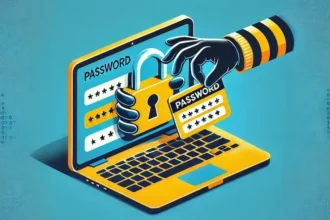IP addresses might seem like just a string of numbers, but they play a vital role in our online experience. Among these identifiers lies the intriguing 185.63.253.2pp—a complex IP that prompts questions and curiosity. Have you ever wondered what makes certain IPs more convoluted than others? Or how even the slightest pattern can influence your internet usage? Join us as we unpack this particular address, exploring its components and importance while shedding light on the world of networking and subnets. Whether you’re tech-savvy or just beginning to dip your toes into network complexities, there’s something valuable here for everyone! Let’s dive in and demystify the enigmatic 185.63.253.2pp together!
What is an 185.63.253.2pp?
The term 185.63.253.2pp refers to a specific Internet Protocol (IP) address, which is used to identify devices on a network.
IP addresses are essential for routing data across the internet, allowing users and devices to communicate effectively.
In this case, the “185.63.253” portion identifies the network segment while “2” represents an individual device within that network.
The addition of “pp” often indicates certain characteristics or services associated with that IP address, such as being part of a private network or possibly assigned with dynamic features.
Understanding this structure helps clarify how data travels from one point to another in our interconnected world.
The Importance of IP Addresses
IP addresses are the backbone of internet communication. They serve as unique identifiers for devices connected to a network. Without them, data packets would struggle to find their destination.
Every time you browse, stream, or interact online, your device relies on an IP address. This identification ensures that information reaches the correct endpoint without confusion.
Moreover, they play a pivotal role in security protocols. By recognizing specific IPs, systems can detect unauthorized access attempts and protect sensitive data.
In addition to functionality, IP addresses help determine geographic locations. This feature allows businesses to tailor content based on user demographics and enhances user experiences across various platforms.
As technology evolves, understanding the significance of these digital addresses becomes increasingly vital for navigating our interconnected world effectively.
Understanding the Components of an IP Address
An IP address is like a digital home address for devices on a network. It ensures that data can find its way to the right location.
There are two main types: IPv4 and IPv6. IPv4 consists of four numerical sections separated by dots, while IPv6 has eight groups of hexadecimal digits divided by colons.
Each section in an IP address serves a purpose. The first part usually identifies the network itself, while subsequent segments pinpoint specific devices within that network.
Subnet masks also play a role in defining how many addresses fall under one network umbrella. This helps manage traffic and improve efficiency.
Understanding these components is crucial for troubleshooting connectivity issues or configuring networks effectively. Each piece works together to establish clear communication across the internet landscape.
Decoding 185.63.253.2pp: Breaking Down Each Component
To decode 185.63.253.2pp, we need to break it down into its essential parts.
The first section, “185,” represents the network portion of the address. It indicates the specific block allocated by an Internet Service Provider (ISP).
Next is “63.” This number narrows it down further, specifying a subnet within that larger network segment.
“253” continues this trend, targeting a more precise subdivision under that subnet for efficient routing and management.
Finally, “2pp” adds complexity. While standard IP addresses don’t end with letters or additional characters like this suffix typically implies special configurations or designations used by certain networks.
Each component serves as a crucial identifier in directing internet traffic accurately and efficiently across global networks. Understanding these intricacies can illuminate how data travels seamlessly through cyberspace.
Why Some IPs are More Complex than Others
The complexity of IP addresses often arises from their intended use. Some are designed for simple, straightforward tasks while others cater to intricate networks.
Dynamic IPs frequently change, adding a layer of unpredictability. Static IPs, on the other hand, remain constant and can be easier to manage but might require more maintenance.
Another factor is how many devices share an address. In larger organizations or data centers, multiple subnets may intertwine within one IP range. This creates further intricacies in addressing schemes.
Furthermore, the geographical distribution plays a role too. An IP address linked to multiple regions can complicate its identification and functionality.
Security features like NAT (Network Address Translation) introduce another level of complexity as they mask inner network structures behind a single external address. These facets highlight why some addresses appear more complex than others at first glance.
The Role of Subnets in IP Addresses
Subnets play a crucial role in the organization of IP addresses. By dividing larger networks into smaller, manageable pieces, subnets enhance performance and security.
This segmentation allows network administrators to group devices based on specific needs or functions. It improves communication efficiency within these smaller clusters while minimizing congestion.
Additionally, subnets help in efficient use of IP address spaces. Rather than assigning a single large block of addresses for an entire network, they enable flexibility by allocating only what is necessary for each subnet.
Security measures are also bolstered through subnets. Isolating sensitive data within specific segments protects it from unauthorized access across the broader network.
In essence, understanding how subnets function is vital for effective IP management. They streamline operations and ensure that networks run smoothly without unnecessary complications.
How to Identify and Troubleshoot Issues with Complex IPs
Identifying issues with complex IPs like 185.63.253.2pp requires a systematic approach.
Start by checking connectivity. Use the ping command to see if the IP is reachable. If there’s no response, that could indicate a problem.
Next, analyze network configurations. Ensure all devices are correctly set up and aligned within the same subnet; misalignments can lead to communication failures.
Utilize tools for deeper analysis. Software like Wireshark allows you to inspect packet flows and identify where things might be going wrong.
Look at network logs for anomalies or error messages related to this specific IP address; they can provide clues about underlying problems.
Don’t forget DNS settings as well; incorrect mappings can cause significant disruptions in service, making it appear as though an IP is malfunctioning when it may not be directly at fault.
Protecting Your Complex IP Address
Protecting your 185.63.253.2pp is crucial in today’s digital landscape. A complex IP address can be a prime target for cybercriminals looking to exploit vulnerabilities.
Start by employing network firewalls. They act as barriers, filtering incoming and outgoing traffic based on predetermined security rules.
Regularly update your software and systems. Outdated programs may contain loopholes that hackers can easily breach.
Consider using a VPN (Virtual Private Network). This adds an extra layer of encryption, making it harder for prying eyes to track your online activities or access sensitive data.
Educate yourself about phishing attacks and social engineering tactics. Awareness is the first line of defense against potential threats.
Regularly monitor your IP address activity for any unusual behavior. Early detection can prevent significant damage down the road.
Conclusion
Understanding complex IP addresses like 185.63.253.2pp opens the door to a world of networking knowledge. As we’ve explored, each segment of an IP address carries vital information about its location and usage.
IP addresses are more than just numbers; they play a crucial role in how devices communicate over the internet. Recognizing their components can enhance your troubleshooting skills and strengthen your network security.
With the intricacies involved in subnets and varying complexities among different IPs, grasping these concepts is essential for anyone interested in IT or cybersecurity.
By protecting your complex IP address effectively, you can ensure better performance and security for all connected devices.
Whether you’re an IT professional or simply curious about networking basics, understanding 185.63.253.2pp equips you with valuable insights into managing digital communication efficiently.

















